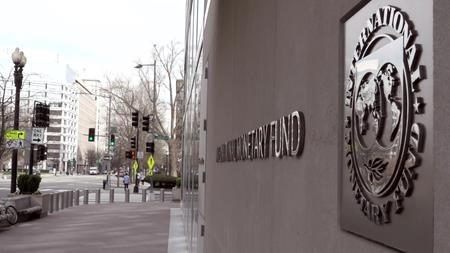
IMF Loans Leave Pak Trapped In Cycle Of Financing Sans Fixing Amid Discrepancies: Report
The inconsistencies in meeting goals have heightened concerns about the credibility of Pakistan's external sector statistics,“leading the IMF to demand corrective measures and a clear communication strategy to restore investor confidence,” according to the report in Khaama Press, an online news service covering events in Afghanistan.
The IMF recently launched its formal review of Pakistan's $7 billion Extended Financing Facility (EFF) and $1.1 billion Resilience and Sustainability Facility (RSF), covering performance through June 2025.
The findings revealed that while Islamabad managed to meet power sector performance benchmarks, revenue collection fell short by nearly 1.2 trillion Pakistani rupees, equivalent to almost 1 per cent of the country's GDP.
The global agency also raised alarm over $11 billion discrepancy in Pakistan's trade data across the past two fiscal years.
“Import figures reported by Pakistan Revenue Automation Limited (PRAL) were $5.1 billion lower than those from Pakistan Single Window (PSW) in FY2023-24, and the gap widened further to $5.7 billion in FY2024-25,” the report noted.
According to the report, the Pakistan Bureau of Statistics has hesitated to revise historical data, wary of the impact on growth and export numbers, but the IMF has insisted that transparency is essential.
Moreover, successive governments have repeatedly avoided long-term reforms, instead turning to short-term external borrowing to manage immediate pressures.
“As a result, Pakistan's balance of payments crisis has become chronic, and IMF bailouts have evolved into routine lifelines rather than extraordinary interventions,” the report noted.
Current IMF-related obligations are already above $7 billion, while officially reported external debt equals 35.1 per cent of GDP.
The accumulation of these debts poses severe risks to fiscal consolidation.
Pakistan's debt-servicing ratio already stands at nearly 30 per cent of export earnings, the same threshold that pushed the country into default in 1999.
“With exports stagnant at just 8 per cent of GDP and imports exceeding 22 per cent, the country faces a structural foreign exchange deficit that cannot be bridged without further borrowing, locking it into a cycle of dependency,” according to the report.
Notably, governance reforms have also shown limited success. Also, revenue targets continue to be missed despite repeated IMF programmes, and implementation of structural reforms remains inconsistent.
“The World Bank's $20 billion ten-year programme announced in January 2025 aims to support energy, education, and infrastructure, but its scale is still insufficient compared to Pakistan's annual $30 billion debt-servicing requirements,” the report highlighted.
According to the report, if Pakistan is to break free from the cycle of crisis and bailout, the bargain between the IMF and Islamabad must be recalibrated.

Legal Disclaimer:
MENAFN provides the
information “as is” without warranty of any kind. We do not accept
any responsibility or liability for the accuracy, content, images,
videos, licenses, completeness, legality, or reliability of the information
contained in this article. If you have any complaints or copyright
issues related to this article, kindly contact the provider above.
Most popular stories
Market Research

- Fitell Corporation Launches Solana (SOL) Digital Asset Treasury With $100M Financing Facility, With Focus On Yield And On-Chain Defi Innovation
- Tradesta Becomes The First Perpetuals Exchange To Launch Equities On Avalanche
- Dubai At The Centre Of Global Finance: Forex Expo 2025 Redefines The Trading Landscape
- Kucoin Appeals FINTRAC Decision, Reaffirms Commitment To Compliance
- Forex Expo Dubai 2025 Conference To Feature 150+ Global FX And Fintech Leaders
- Daytrading Publishes New Study Showing 70% Of Viral Finance Tiktoks Are Misleading




















Comments
No comment